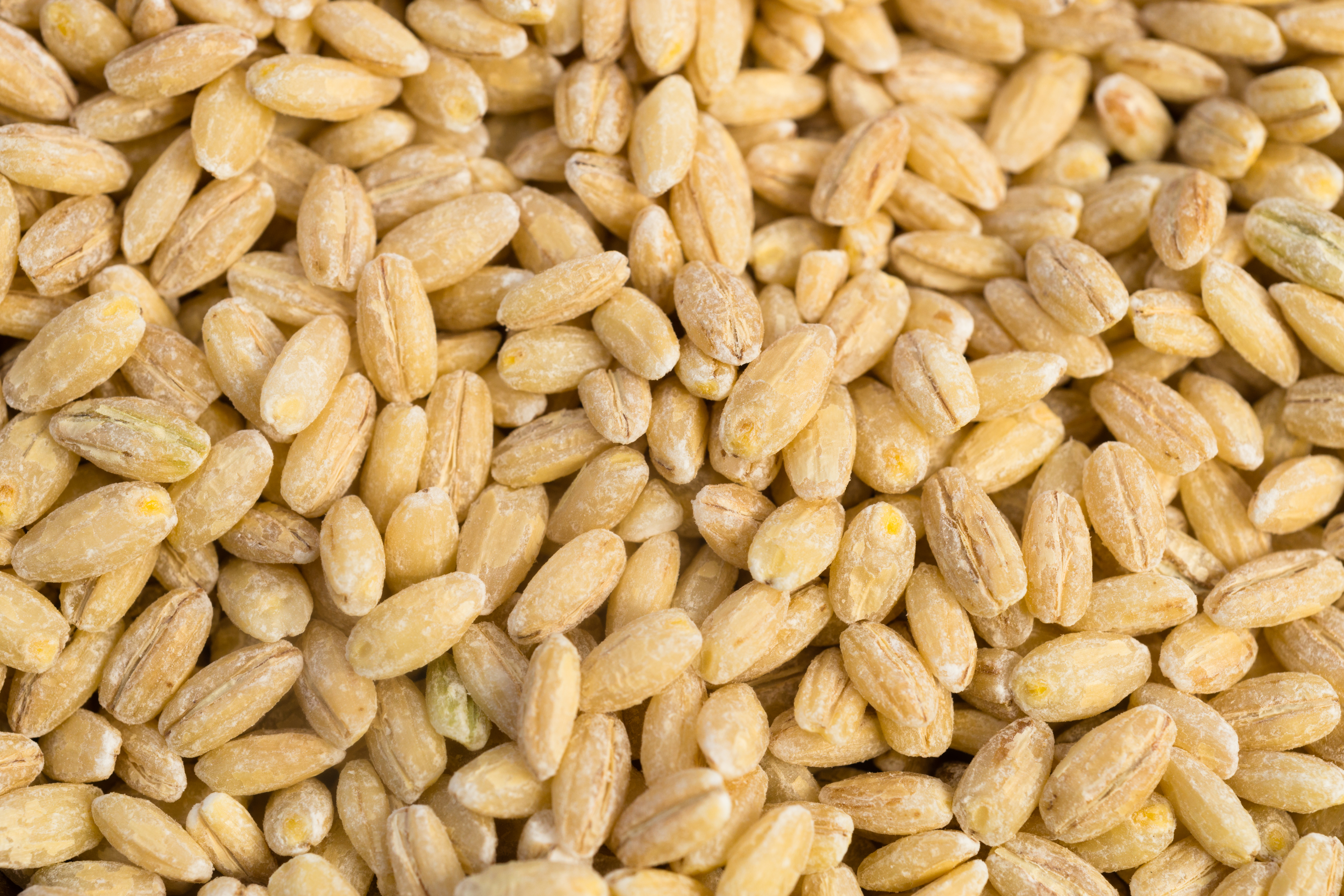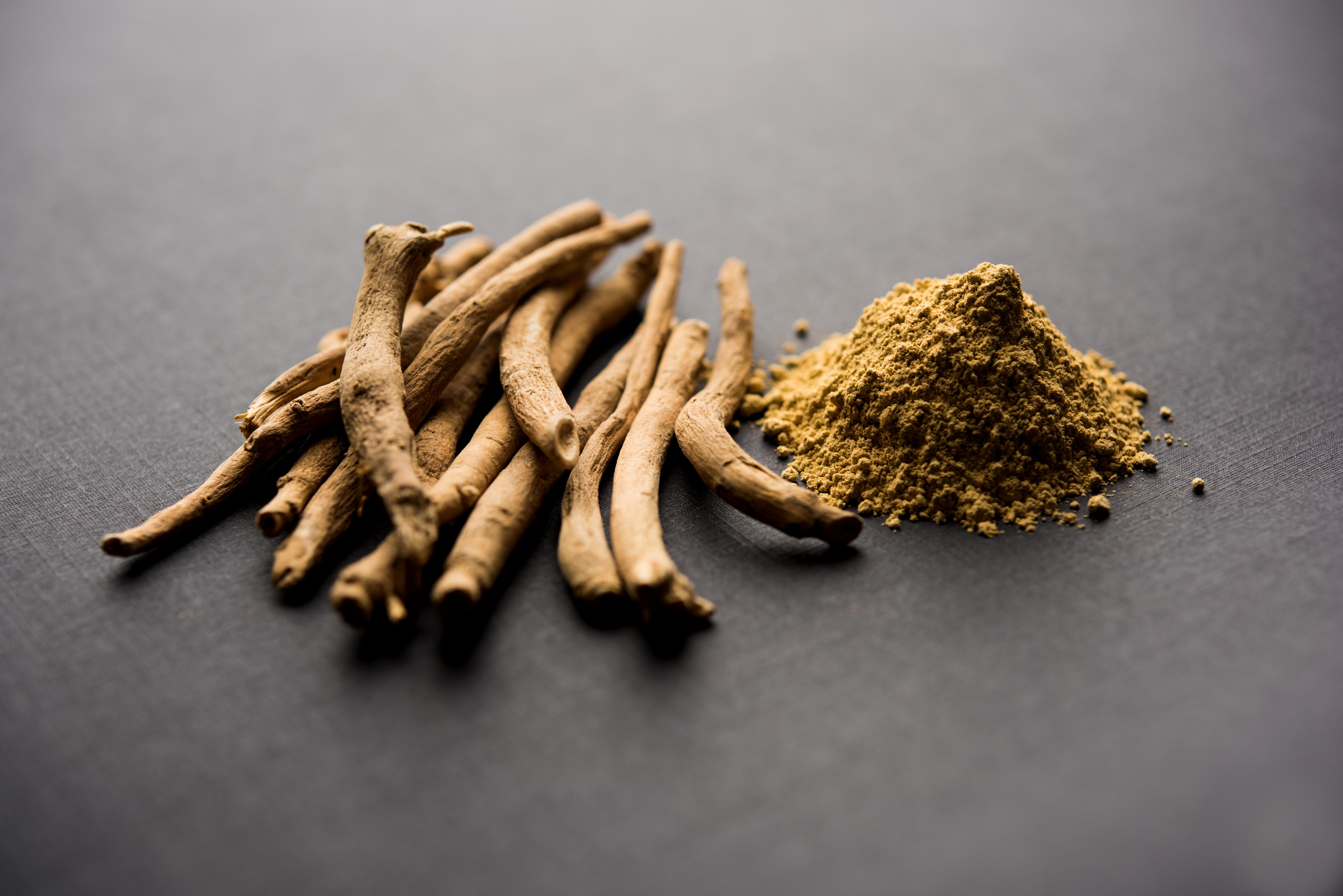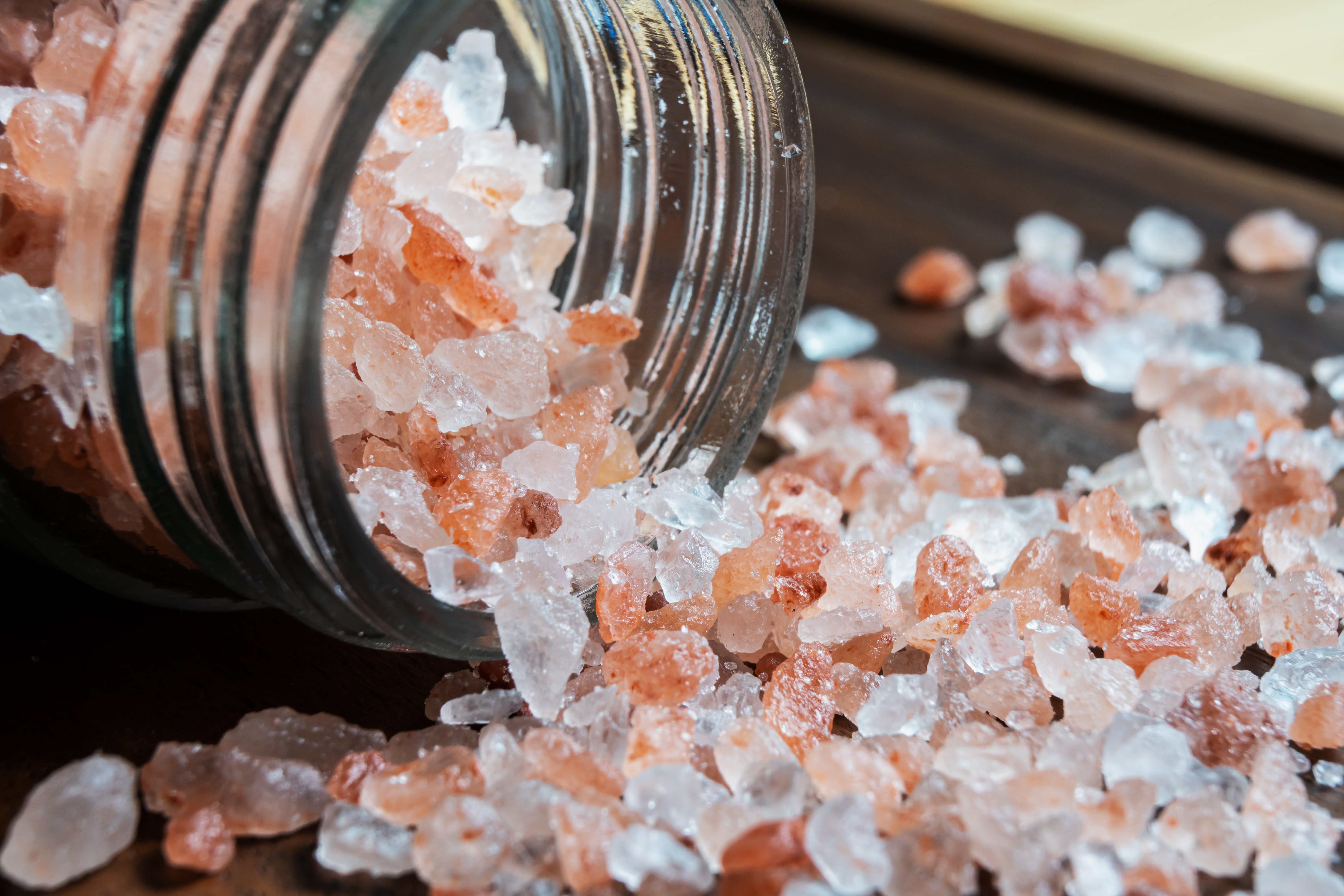Natural Fixes for the Fatigue Caused by Low Cortisol Levels
Cortisol plays a crucial role in energy, focus, blood pressure, and emotional resilience — and when it’s depleted, everything feels off. But here’s the empowering part: you can support your adrenal health without jumping straight to medications. We’ve expanded our list of natural fixes for low fatigue cause by low cortisol — science-backed, doable strategies that help restore your body’s rhythm from the ground up. From targeted nutrition and nervous system resets to sleep tweaks and stress-recovery rituals, these holistic solutions are designed to meet you where you are and gently build you back up. Let’s get you back in sync!
1. Nourish Your Adrenal Glands with Whole Foods

A nutrient-rich diet is essential for supporting adrenal health and maintaining balanced cortisol levels. The adrenal glands require specific vitamins and minerals to produce hormones effectively, and incorporating whole, unprocessed foods into your diet is the best way to provide these nutrients. Foods high in vitamin C, such as oranges, bell peppers, and kiwis, are particularly beneficial because vitamin C is crucial for adrenal function. Similarly, magnesium-rich foods like spinach, almonds, and pumpkin seeds help reduce stress and support overall hormone balance. Omega-3 fatty acids, found in salmon, chia seeds, and walnuts, are also important for reducing inflammation and promoting a healthy adrenal response.
2. Start the Day with a Protein-Packed Breakfast

A protein-rich breakfast is a powerful way to stabilize blood sugar levels and kickstart cortisol production in the morning. Since cortisol naturally peaks early in the day, eating a balanced breakfast that includes protein, healthy fats, and complex carbohydrates can help sustain energy levels and prevent mid-morning crashes. Eggs, Greek yogurt, cottage cheese, or plant-based protein sources like tofu and quinoa are excellent options to include in your morning meal.
3. Stay Active with Moderate Exercise

Regular physical activity is one of the most effective ways to boost low cortisol levels and enhance overall well-being. Exercise stimulates the release of endorphins, which improve mood and counteract the effects of stress. However, the type and intensity of exercise are key to balancing cortisol levels. Moderate activities like brisk walking, swimming, yoga, or light cycling are ideal for promoting a steady release of cortisol without overstressing the body.
4. Prioritize Sleep for Hormonal Balance

Sleep is a cornerstone of hormonal health and plays a critical role in regulating cortisol levels. Cortisol follows a natural circadian rhythm, peaking in the early morning to help you wake up and declining throughout the day to support restful sleep. Disruptions to this rhythm, such as irregular sleep schedules or insufficient sleep, can lead to imbalanced cortisol levels and feelings of fatigue. To optimize sleep, establish a consistent bedtime and wake-up time, even on weekends.
5. Embrace Adaptogenic Herbs

Adaptogenic herbs have long been used in traditional medicine to support the body’s ability to adapt to stress and restore hormonal balance. Herbs like ashwagandha, rhodiola, and holy basil are particularly effective for boosting low cortisol levels. Ashwagandha is renowned for its ability to reduce stress and improve energy levels, while rhodiola enhances mental clarity and stamina. Holy basil, also known as tulsi, has calming properties that support adrenal health and resilience. These herbs can be consumed as teas, capsules, or tinctures, making them easy to incorporate into your daily routine.
6. Manage Stress Through Mindfulness

Chronic stress is one of the leading causes of low cortisol levels. Incorporating mindfulness practices into your daily routine can help mitigate the effects of stress and support adrenal function. Mindfulness involves focusing on the present moment and cultivating a sense of calm and awareness. Techniques like meditation, deep breathing, and progressive muscle relaxation are particularly effective at reducing stress and promoting cortisol balance. Even dedicating 10–15 minutes a day to mindfulness can have a significant impact!
7. Get Outside and Absorb Natural Light

Exposure to natural light, especially in the morning, is essential for regulating cortisol production and aligning your circadian rhythm. Natural light helps signal your body to produce cortisol in the morning, providing a natural energy boost. Spend 20–30 minutes outdoors each morning, whether walking, gardening, or simply sitting in the sun. If natural sunlight is limited, especially during winter months, consider using a light therapy box to mimic the effects of natural light. Natural light exposure not only supports cortisol production but also enhances mood and vitamin D synthesis, which is vital for overall health.
8. Hydrate Strategically Throughout the Day

Hydration is often overlooked but plays a vital role in cortisol regulation. Dehydration places additional stress on the body, potentially impairing adrenal function and reducing cortisol production. Starting your day with a glass of water and maintaining steady hydration throughout the day is essential. Aim for 8–10 cups of water daily, adjusting based on your activity level and climate. Herbal teas, such as chamomile or ginger, can provide hydration while offering calming properties that support cortisol balance. Avoid excessive caffeine, which can lead to dehydration and cortisol spikes followed by crashes.
9. Fuel Your Gut with Probiotic Foods

The health of your gut directly influences cortisol production through the gut-brain axis. A healthy gut microbiome supports the production of neurotransmitters and hormones that regulate stress responses. Probiotic-rich foods like yogurt, kefir, sauerkraut, and kimchi promote gut health and enhance nutrient absorption, which is crucial for adrenal function. Pair probiotics with prebiotic-rich foods like garlic, onions, and bananas to nourish beneficial gut bacteria.
10. Build a Strong Support Network

Positive social connections can significantly impact cortisol levels. Spending time with supportive friends, family, or community groups fosters a sense of belonging and emotional security, which helps regulate stress hormones. Social interactions release oxytocin, a hormone that counteracts stress and promotes relaxation. Prioritize quality time with loved ones or join activities that encourage meaningful connections, such as volunteer work or group fitness classes.
11. Add a Pinch of Himalayan Salt

For individuals with low cortisol, a small amount of natural salt can support adrenal function and electrolyte balance. The adrenal glands rely on minerals like sodium to produce hormones, and incorporating Himalayan or sea salt into your diet can provide a gentle boost. Sprinkle it on meals or add a pinch to water for a refreshing, mineral-rich drink. Avoid excessive salt consumption, as balance is key. When used mindfully, natural salts can help restore cortisol levels and support overall adrenal health.
12. Practice Gratitude Daily

Positive thinking and gratitude have profound effects on cortisol regulation. Focusing on the positive aspects of life reduces stress and fosters resilience. Practices like keeping a gratitude journal, expressing appreciation, or visualizing positive outcomes can shift your mindset and promote emotional well-being. By embracing positivity and gratitude, you can create a supportive internal environment that enhances your body’s ability to regulate cortisol naturally. Over time, this practice can lead to improved mood, greater resilience, and a more balanced life.
13. Try Cold Water Therapy (Mindfully)

Cold exposure, like a brisk shower or splash of cold water on the face, can give your adrenal system a short-term, healthy jolt—stimulating cortisol production and improving alertness. Used in moderation, cold water therapy helps wake up your system without relying on caffeine. Start with 30 seconds of cool water at the end of your shower and slowly increase over time. It’s not about discomfort—it’s about gentle stimulation. Overdoing it can backfire, so listen to your body. This practice can boost mood, sharpen focus, and help recalibrate cortisol rhythms naturally.
14. Limit Blue Light at Night

Excessive blue light from phones, tablets, and laptops late at night can confuse your body’s internal clock, leading to disrupted sleep and misaligned cortisol rhythms. Blue light inhibits melatonin and may keep cortisol elevated at night—exactly when it should be tapering off. Reduce screen time 1–2 hours before bed and use night mode or blue light filters if you must be online. Swap evening scrolling for screen-free wind-down rituals like reading or stretching. This small shift helps restore your body’s natural cortisol curve and supports deeper, more restorative sleep.
15. Replenish with B Vitamins

B vitamins, especially B5 (pantothenic acid), B6, and B12, are crucial for adrenal health and cortisol production. These vitamins support energy metabolism and help your body respond effectively to stress. Low levels of B vitamins can leave you feeling drained, anxious, and sluggish. Load up on whole foods like eggs, salmon, leafy greens, legumes, and fortified grains—or consider a high-quality B-complex supplement. Regular replenishment helps your body better manage daily stressors and bounce back from fatigue. When cortisol is low, the B vitamins act as quiet but essential rebuilders behind the scenes.
16. Say No Without Guilt

One of the most draining habits for those with low cortisol is overcommitting. Constant “yeses” can deplete already taxed adrenal glands. Learning to say no—without guilt—is an underrated form of energy preservation. Boundaries reduce chronic stress, give your body space to rest, and protect your cortisol rhythm. Practice polite but firm declines, like “I’d love to, but I’m at capacity this week.” Saying no is not selfish—it’s restorative. It’s a way of honoring your bandwidth, allowing your system to recover and replenish instead of running on fumes.
17. Incorporate Gentle Evening Stretching

When cortisol is low, high-intensity evening workouts can be too stimulating. Gentle stretching, however, is a nourishing way to release tension, improve circulation, and calm your nervous system before bed. Focus on hip openers, spinal twists, and neck stretches—areas that often hold stress. Deep breathing alongside movement encourages the parasympathetic nervous system to take over, prepping your body for rest and hormonal repair. Just 10–15 minutes before bed can improve sleep and support natural cortisol rhythms, without placing additional demands on your system.
18. Ditch the Afternoon Caffeine Habit

That 3 PM coffee may feel like a lifeline—but it could be sabotaging your cortisol. Caffeine stimulates cortisol production in the short term, but repeated use can blunt your adrenal response over time. Worse, late-day caffeine disrupts sleep and perpetuates the fatigue cycle. Instead, opt for a small protein-rich snack, a short walk, or herbal alternatives like rooibos or ginseng tea to revive your energy. Gradually reducing your afternoon caffeine can reset your natural rhythms and allow your cortisol curve to rebalance itself without artificial spikes and crashes.
19. Balance Blood Sugar with Mini Meals

Low cortisol often walks hand-in-hand with blood sugar instability. Skipping meals or eating too infrequently can send your energy plummeting and strain your adrenals further. Try eating small, balanced meals or snacks every 3–4 hours—especially ones with protein, fiber, and healthy fats. This keeps blood sugar stable and provides consistent fuel for your adrenals to produce cortisol. Examples: apple slices with almond butter, boiled eggs and hummus, or Greek yogurt with chia seeds. Stable energy throughout the day equals less panic for your body—and more room for repair.
20. Journal for Emotional Detox

Emotional buildup can weigh heavily on your adrenal system. Journaling is a powerful, low-effort practice that allows you to release inner stress and give your nervous system space to exhale. Whether you jot down worries, track your symptoms, or simply free-write for five minutes before bed, this simple habit can reduce cortisol-suppressing tension. Over time, journaling promotes self-awareness, emotional processing, and mental clarity—all essential when you’re running on low reserves. Make it a daily ritual, not a chore. No judgment, no structure—just space for whatever needs out.
21. Practice “Strategic Slowness”

In a world that rewards urgency, slowness is a rebellion—and a remedy. People with low cortisol often push through fatigue, driven by deadlines or guilt. But slowing down is exactly what your body needs to heal. Start by building micro-moments of slowness into your day: a 5-minute walk without your phone, eating lunch without multitasking, or taking 10 deep breaths between tasks. These pauses lower sympathetic nervous system activation, allowing cortisol rhythms to stabilize. It’s not laziness—it’s recalibration. The slower you go, the faster you recover.
22. Surround Yourself with Calming Sensory Cues

Your environment speaks to your nervous system constantly. Use it to your advantage. Soft lighting, calming music, warm textures, and soothing scents like lavender or cedarwood can all send your brain signals of safety—and in turn, help support cortisol balance. Light a candle while journaling, diffuse essential oils in the evening, or choose natural fabrics for comfort. These sensory cues create an internal feedback loop: calm surroundings support calm biology. When your external world slows down, your internal stress system finally gets the message—it’s safe to rest, recover, and renew.
23. Try Licorice Root (Short-Term and Supervised)

Licorice root isn’t just a candy flavor—it’s a powerful herbal ally for low cortisol. This root contains glycyrrhizin, which slows the breakdown of cortisol in your body, giving your adrenal glands a break and extending the hormone’s activity. It can help improve energy, blood pressure, and mental clarity in those with adrenal fatigue. But it’s not for long-term use or unsupervised self-dosing: licorice can raise blood pressure and interact with medications. Opt for deglycyrrhizinated (DGL) forms if you want gut support without affecting cortisol. Always consult a professional—this is a potent tool, not a casual tea bag.
24. Create a “Cortisol-Friendly” Wake-Up Routine

How you start your day tells your adrenals what kind of stress environment they’re waking into. Instead of jolting yourself awake with alarms, bright screens, and caffeine, try a cortisol-conscious morning routine: open the curtains to get natural light, take 5 deep breaths before getting out of bed, and move gently—think stretching, not sprinting. Delay caffeine for at least 60–90 minutes to allow your body’s natural cortisol surge to peak. Even a 5-minute slow start sets the tone for better hormonal alignment, less adrenaline reliance, and more sustainable energy all day long.
25. Use Magnesium to Calm and Rebuild

Magnesium is one of the most depleted minerals in people dealing with adrenal fatigue—and one of the most essential for recovery. It helps regulate the HPA axis (your stress-response system), improve sleep, reduce anxiety, and ease muscle tension. Without it, your system stays on edge. Foods like dark leafy greens, pumpkin seeds, and dark chocolate are great sources, but you might also consider magnesium glycinate or magnesium baths for deeper replenishment. Unlike stimulants, magnesium doesn’t force energy—it restores it gently by calming the nervous system and allowing cortisol rhythms to reset.
26. Schedule White Space on Your Calendar

If your calendar is full, your cortisol won’t fully recover—no matter how many smoothies or supplements you add. White space isn’t laziness—it’s hormonal rehab. Schedule unstructured time every week (even just 30 minutes) where you’re not working, socializing, or running errands. It’s a break from productivity pressure that tells your brain: “I’m safe.” These micro-recovery windows allow your nervous system to shift from fight-or-flight into rest-and-repair mode. You don’t need to earn your rest. You just need to plan it—because in a low-cortisol state, stillness isn’t indulgent. It’s necessary.
27. Visualize Recovery—Not Just Relaxation

Guided imagery and visualization aren't just feel-good practices—they’re biologically powerful. Mental rehearsal of calm, safe, empowered states can help regulate cortisol and activate the parasympathetic nervous system. Try this: for 5 minutes, visualize your adrenal glands healing, your body feeling strong again, your energy returning in waves. Anchor the visualization with slow breathing. This intentional focus shifts your brain’s perception of safety, which influences hormone output. You're not “manifesting” your way to health—you’re helping your biology remember what safety and vitality feel like. And sometimes, that’s the most powerful medicine of all.
28. Engage in Creative Outlets

Creative expression is a powerful tool for stress reduction and can help support cortisol balance. Hobbies like drawing, painting, writing, playing music, or even gardening provide a focused, non-judgmental space for your mind to decompress. This shift from problem-solving to creative flow activates different parts of the brain and can lower stress hormones. It's not about being a master artist or musician; it's about the act of creating itself. Setting aside even 15-20 minutes a day for a creative pursuit you enjoy can serve as a mental reset, helping to lower chronic stress and give your adrenal glands a much-needed break.
29. Use Essential Oils for a Calming Ritual

Aromatherapy can be a simple but effective way to signal to your nervous system that it's time to relax. Specific essential oils have been studied for their calming and anti-anxiety effects, which can directly support cortisol regulation. Lavender, chamomile, frankincense, and vetiver are all excellent choices. You can add a few drops to a diffuser in your bedroom or workspace, create a calming room spray with water, or mix a small amount with a carrier oil (like jojoba or coconut) for a gentle massage on your temples or wrists before bed. This sensory ritual creates a powerful link between scent and a state of calm, helping your body wind down from a stressful day.
30. Incorporate Electrolytes Beyond Salt

While Himalayan salt is a good start, true electrolyte balance is key for adrenal function. The adrenal glands produce aldosterone, a hormone that regulates sodium, potassium, and water. When cortisol is low, aldosterone can be affected, leading to electrolyte imbalances that cause fatigue, dizziness, and muscle weakness. Beyond salt, add potassium and magnesium-rich foods to your diet. Consider sipping on a homemade electrolyte drink made with a pinch of salt, a squeeze of lemon or lime juice, and a little maple syrup in water. This simple mixture can help your body stay hydrated and maintain the mineral balance needed for optimal adrenal support.
31. Reconnect with Nature

Spending time in nature has a profound, scientifically-backed effect on reducing stress and balancing hormones. It’s not just a nice idea—studies have shown that just 20 minutes in a green space can lower cortisol levels. The sights, sounds, and smells of nature have a direct calming effect on the nervous system, shifting you from a state of fight-or-flight to rest-and-digest. Take a walk in a park, sit by a tree, or tend to a small garden. This "nature therapy" offers a powerful, no-cost way to recharge your adrenal glands and bring your body back into its natural rhythm.
32. Cultivate Compassion for Yourself

Healing from low cortisol is a process, not an overnight fix. Self-criticism and guilt can add significant stress and hinder your recovery. Practicing self-compassion means acknowledging your feelings of fatigue and burnout without judgment. Instead of telling yourself you "should" be doing more, try saying, "My body is tired, and that's okay. I will rest and take care of myself." This internal shift from pressure to acceptance lowers the mental and emotional stress load, which directly helps regulate cortisol. Self-compassion is the foundation of every other healing strategy; without it, you're still fighting your own body.
33. The Power of Laughter

Laughter is one of the most powerful and immediate natural remedies for stress and low energy. A good laugh, whether from a funny video, a friend's joke, or a comedy show, triggers the release of endorphins and dopamine, two "feel-good" hormones. This response directly counters the effects of stress and can help regulate cortisol levels. Laughter is a powerful nervous system reset, shifting you from a state of tension to one of relaxation and calm. Make a conscious effort to seek out humor in your day; it’s a simple, no-cost way to give your adrenal glands a much-needed break and boost your mood.
34. Prioritize Healthy Fats

Beyond general healthy eating, a strategic focus on healthy fats is crucial for adrenal health. Your body needs cholesterol to produce steroid hormones like cortisol, and while your body makes some, consuming a diet rich in healthy fats ensures you have the necessary building blocks. Incorporate a variety of avocados, nuts, seeds, and extra virgin olive oil into your meals. These fats not only support hormone production but also help stabilize blood sugar, preventing the energy crashes that put extra strain on your adrenals. It's a foundational step to fuel your body's hormonal factory from the ground up.
35. The Art of the "Unplugged" Break

In our always-on world, a simple break is not enough. You need an unplugged break to truly support your cortisol levels. Taking a few minutes to step away from your computer or phone and simply stare out a window, stretch, or do nothing at all allows your brain to shift out of a high-alert, problem-solving state. This "white space" on your calendar gives your nervous system permission to rest, and in doing so, helps to lower circulating stress hormones. Try setting a timer for 5 minutes and commit to a screen-free, low-effort pause in your day; this small habit can have a significant impact.
36. Chew Your Food Slowly

This might seem unrelated, but the simple act of chewing your food slowly is a powerful way to support your adrenal health. When you eat too quickly, your body perceives it as a hurried, stressful event. This can trigger a mild fight-or-flight response, raising cortisol levels and putting stress on your digestive system. Chewing slowly signals to your brain that it's safe to digest. It also helps with nutrient absorption and prevents blood sugar spikes. Taking the time to savor your food is a mindful practice that calms your nervous system and helps your body operate more efficiently, all while supporting balanced cortisol.
37. Practice a "Media Blackout"

A constant stream of negative news, social media drama, and screen time can keep your nervous system in a state of low-grade anxiety, constantly signaling a need for cortisol. A media blackout, even for a few hours a day or one full day a week, can be an incredible way to reduce this subtle, draining stress. Instead of mindlessly scrolling, engage in a relaxing hobby like reading a book, listening to music, or spending time outdoors. This intentional break from the digital world gives your adrenals a break from constant stimulation, allowing your body to rest and rebalance naturally.
38. Practice Diaphragmatic Release (Abdominal Calming)

Chronic stress causes the diaphragm to tighten and restrict, forcing shallow, upper-chest breathing that maintains a constant "fight-or-flight" state. This limits oxygen and overworks the adrenals. Adopt a habit of gently massaging and stretching your diaphragm area (just below the ribcage). Lie on your back and, during a slow exhale, use your fingertips to gently press inward and upward under your ribs. This manual release helps relax the central breathing muscle, encourages deep belly breathing, and significantly improves vagal tone. This structural tweak provides a profound signal of safety to your nervous system, allowing for reduced stress hormone output and faster cortisol replenishment.
39. The Vagal Reset: Cold Water on the Neck

A quick, strategic application of cold water to the back of the neck or the face is a potent, immediate hack to lower the nervous system's high-alert status. The vagus nerve, which regulates the heart rate and initiates the "rest and digest" state, runs down the neck. Splashing ice-cold water on your face or placing a small ice pack on the back of your neck for 10–15 seconds triggers a mild "dive reflex," which immediately drops your heart rate and profoundly activates the parasympathetic nervous system. This direct, sensory intervention provides a fast, physiological interrupt to the stress cycle, helping your over-taxed adrenals step out of emergency mode and conserve their remaining cortisol reserves.
40. Prioritize Tyrosine-Rich Foods (The Neuro-Precursor Fuel)

When cortisol is low, your body is often struggling to produce other crucial stress hormones and neurotransmitters, including dopamine, norepinephrine, and epinephrine (adrenaline). These are all synthesized from the amino acid L-Tyrosine. Supplementing with or eating foods rich in this precursor amino acid provides the raw materials your adrenals and brain need to create these stimulating and focusing hormones without forcing an external spike. Tyrosine doesn't directly force cortisol production, but by giving the body the building blocks for its other "wake-up" chemicals, it reduces the burden on the already exhausted cortisol system. Incorporate cheese, eggs, sesame seeds, chicken, or turkey into your meals to provide this gentle, fundamental fuel for energy and focus.
41. Cook with Coconut Oil (The Medium-Chain Energy Source)

Integrate small amounts of coconut oil into your cooking or morning routine (e.g., in coffee or oats). Its unique structure—being primarily composed of Medium-Chain Triglycerides (MCTs)—offers a powerful, direct energy source for the body and brain. Unlike long-chain fats, MCTs are rapidly metabolized and do not require bile for digestion, providing quick, efficient fuel without burdening the liver or digestive system. This readily available energy source reduces the metabolic stress that often forces the body to constantly tap the adrenal glands for cortisol. By supplying consistent, clean energy, you help spare your adrenals from chronic demand, allowing them more time to rest, recover, and eventually rebalance their hormone production.
42. Practice Low-Energy Digestion (Warm and Cooked Foods)

Digestion consumes a significant amount of metabolic energy, and when cortisol is low, your system needs to conserve every available resource for healing. Shift your diet towards warm, cooked, and easily digestible foods to reduce the energetic demands placed on your digestive system. Raw vegetables, large cold salads, and heavily processed meats require much more effort to break down, which forces the body to divert energy away from adrenal repair. Instead, prioritize soups, stews, gently steamed vegetables, and small, frequent meals. This subtle adjustment in food temperature and preparation allows your body to dedicate more energy toward HPA axis recovery rather than strenuous digestive work, accelerating the process of hormonal replenishment.
43. Embrace "Hormonal Napping" (The Midday Cortisol Dip)

Targeted midday rest is crucial for recovering from low cortisol fatigue. Instead of forcing yourself through the slump, embrace the concept of the "hormonal nap." This is a 10 to 20-minute rest period scheduled between 1:00 PM and 4:00 PM, when the body naturally experiences its lowest cortisol and energy dip. Lying down during this time—even without fully sleeping—gives the HPA axis (Hypothalamic-Pituitary-Adrenal axis) a temporary reboot, interrupting the reliance on compensatory adrenaline. This brief, intentional pause reallocates energy reserves away from stress management and toward cellular repair, preventing the afternoon crash and significantly speeding up the long-term replenishment of exhausted adrenal function.
44. Prioritize Tyrosine-Rich Foods (The Neuro-Precursor Fuel)

When cortisol is low, your body is often struggling to produce other crucial stress hormones and neurotransmitters, including dopamine, norepinephrine, and epinephrine (adrenaline). These are all synthesized from the amino acid L-Tyrosine. Supplementing with or eating foods rich in this precursor amino acid provides the raw materials your adrenals and brain need to create these stimulating and focusing hormones without forcing an external spike. Tyrosine doesn't directly force cortisol production, but by giving the body the building blocks for its other "wake-up" chemicals, it reduces the burden on the already exhausted cortisol system. Incorporate cheese, eggs, sesame seeds, chicken, or turkey into your meals to provide this gentle, fundamental fuel for energy and focus.
From Burnout to Balance: Reclaim Your Energy, Naturally

Recovery isn’t about doing more—it’s about doing right. Not perfectly, but consistently. These practices work not by force, but by permission—letting your system step out of survival mode and back into balance. So if you’ve been feeling wired, tired, or worn thin, take heart: your energy isn’t lost. It’s just waiting for the right conditions to return. And with the right care, it will. This is your blueprint to begin again.